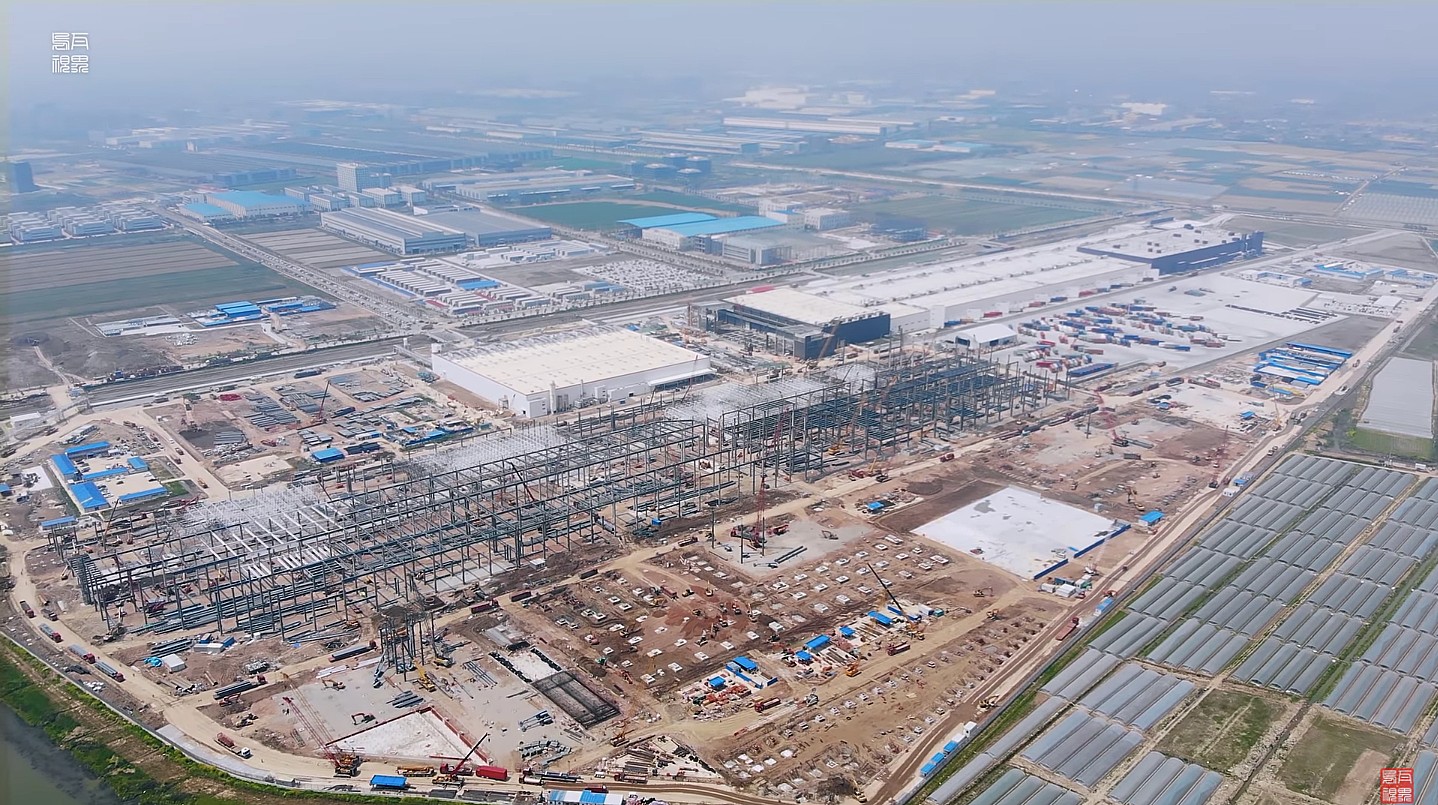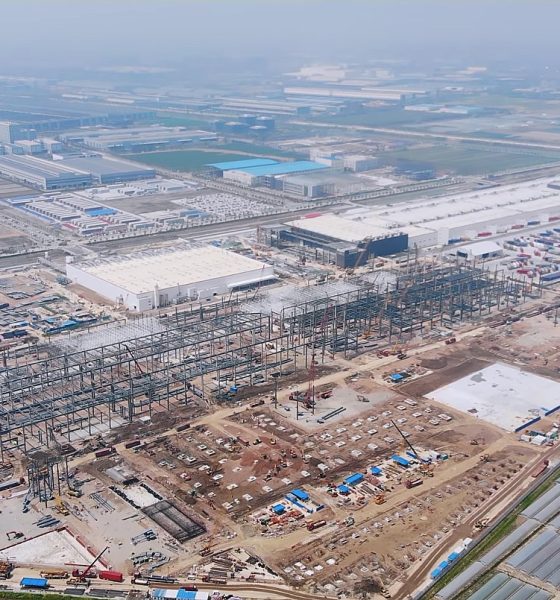

News
Tesla locks in world’s largest cobalt supplier Glencore for Gigafactory Shanghai, Berlin
Tesla has secured a deal to purchase 12 million pounds of cobalt annually from Glencore, a Swiss-based company that is recognized as the world’s largest miner of the metal. The partnership will keep Tesla away from a possible supply squeeze of cobalt as more automakers aim to break into the EV sector in the future.
The deal will supply both Giga Shanghai and Giga Berlin with enough of the metal to avoid a shortage in the future. With the electric vehicle sector continuing to grow, and demand for Tesla vehicles expanding in both Europe and Asia, the company has struck a deal that will alleviate any supply shortage concerns in the coming years.
The terms of the deal are unknown, and neither company responded to inquiries from Bloomberg, which first reported the partnership between the electric car maker and the cobalt supplier.
In both China and Europe, popular automakers like Volkswagen, BMW, and BYD are preparing for a future with electric transportation. In 2017 and 2018, a shortage in cobalt caused prices to spike, which seems to have given Tesla CEO Elon Musk the indication that his company must begin developing a battery that was less reliant on the metal. While Tesla continues to work on battery cells that are free of cobalt, the deal with Glencore ensures that the electric car maker will not be in short supply in the foreseeable future.
Tesla had been discussing the terms of a deal with Glencore since mid-January. However, Glencore’s automotive supply chain goes past the Silicon Valley-based automaker. The company signed an agreement with BMW in April 2019, and also with Korean battery manufacturer SK Innovation in December 2019.
Tesla is looking to ramp up production outside of the United States as demand continues to increase across the globe. With the company planning to begin a steady push of the Model Y in Europe and Asia in 2021, Tesla’s battery supply chain must be efficient and dependable to ensure a steady flow of reliable electric vehicles.
Giga Shanghai is currently producing vehicles at a run-rate of 200,000 a year, with production expected to increase when Tesla completes phase 2A of the facility. The completion of the second phase in China will introduce the Model Y to the largest automotive market in the world.
Meanwhile, Giga Berlin is still roughly a year away from its initial production push, which will begin with the Model Y. However, Tesla anticipates an annual production rate of 500,000 electric cars per year.
Tesla recently expanded on its use of cobalt within its battery cells in the 2019 Impact Report. The company currently utilizes “nickel-rich cathode materials” in its cells, which contain less cobalt concentration than cathode chemistries that other companies use in their batteries.
The company also expanded on its practices of using cobalt, which is controversial on its own due to its mining practices in the Democratic Republic of Congo. Glencore owns a mine in the DRC, but it is currently closed for maintenance. Tesla’s suppliers are required to follow the company’s “Supplier Code of Conduct” and its “Human Rights and Conflict Minerals Policy.” Each of Tesla’s suppliers is subjected to an annual third-party to ensure safe and humane mining practices.
Tesla’s deal with Glencore will ensure safe and humane cobalt mining, but it will also ensure the company’s long-term success as production and demand for continue to rise. The electric automaker will undoubtedly let go of any concern that may have to do with supply shortages while the industry continues to grow amid more competition entering the sector.

News
Man credits Grok AI with saving his life after ER missed near-ruptured appendix
The AI flagged some of the man’s symptoms and urged him to return to the ER immediately and demand a CT scan.

A 49-year-old man has stated that xAI’s Grok ended up saving his life when the large language model identified a near-ruptured appendix that his first ER visit dismissed as acid reflux.
After being sent home from the ER, the man asked Grok to analyze his symptoms. The AI flagged some of the man’s symptoms and urged him to return immediately and demand a CT scan. The scan confirmed that something far worse than acid reflux was indeed going on.
Grok spotted what a doctor missed
In a post on Reddit, u/Tykjen noted that for 24 hours straight, he had a constant “razor-blade-level” abdominal pain that forced him into a fetal position. He had no fever or visible signs. He went to the ER, where a doctor pressed his soft belly, prescribed acid blockers, and sent him home.
The acid blockers didn’t work, and the man’s pain remained intense. He then decided to open a year-long chat he had with Grok and listed every detail that he was experiencing. The AI responded quickly. “Grok immediately flagged perforated ulcer or atypical appendicitis, told me the exact red-flag pattern I was describing, and basically said “go back right now and ask for a CT,” the man wrote in his post.
He copied Grok’s reasoning, returned to the ER, and insisted on the scan. The CT scan ultimately showed an inflamed appendix on the verge of rupture. Six hours later, the appendix was out. The man said the pain has completely vanished, and he woke up laughing under anesthesia. He was discharged the next day.
How a late-night conversation with Grok got me to demand the CT scan that saved my life from a ruptured appendix (December 2025)
byu/Tykjen ingrok
AI doctors could very well be welcomed
In the replies to his Reddit post, u/Tykjen further explained that he specifically avoided telling doctors that Grok, an AI, suggested he get a CT scan. “I did not tell them on the second visit that Grok recommended the CT scan. I had to lie. I told them my sister who’s a nurse told me to ask for the scan,” the man wrote.
One commenter noted that the use of AI in medicine will likely be welcomed, stating that “If AI could take doctors’ jobs one day, I will be happy. Doctors just don’t care anymore. It’s all a paycheck.” The Redditor replied with, “Sadly yes. That is what it felt like after the first visit. And the following night could have been my last.”
Elon Musk has been very optimistic about the potential of robots like Tesla Optimus in the medical field. Provided that they are able to achieve human-level articulation in their hands, and Tesla is able to bring down their cost through mass manufacturing, the era of AI-powered medical care could very well be closer than expected.
News
Tesla expands Model 3 lineup in Europe with most affordable variant yet
The Model 3 Standard still delivers more than 300 miles of range, potentially making it an attractive option for budget-conscious buyers.

Tesla has introduced a lower-priced Model 3 variant in Europe, expanding the lineup just two months after the vehicle’s U.S. debut. The Model 3 Standard still delivers more than 300 miles (480 km) of range, potentially making it an attractive option for budget-conscious buyers.
Tesla’s pricing strategy
The Model 3 Standard arrives as Tesla contends with declining registrations in several countries across Europe, where sales have not fully offset shifting consumer preferences. Many buyers have turned to options such as Volkswagen’s ID.3 and BYD’s Atto 3, both of which have benefited from aggressive pricing.
By removing select premium finishes and features, Tesla positioned the new Model 3 Standard as an “ultra-low cost of ownership” option of its all-electric sedan. Pricing comes in at €37,970 in Germany, NOK 330,056 in Norway, and SEK 449,990 in Sweden, depending on market. This places the Model 3 Standard well below the “premium” Model 3 trim, which starts at €45,970 in Germany.
Deliveries for the Standard model are expected to begin in the first quarter of 2026, giving Tesla an entry-level foothold in a segment that’s increasingly defined by sub-€40,000 offerings.
Tesla’s affordable vehicle push
The low-cost Model 3 follows October’s launch of a similarly positioned Model Y variant, signaling a broader shift in Tesla’s product strategy. While CEO Elon Musk has moved the company toward AI-driven initiatives such as robotaxis and humanoid robots, lower-priced vehicles remain necessary to support the company’s revenue in the near term.
Reports have indicated that Tesla previously abandoned plans for an all-new $25,000 EV, with the company opting to create cheaper versions of existing platforms instead. Analysts have flagged possible cannibalization of higher-margin models, but the move aims to counter an influx of aggressively priced entrants from China and Europe, many of which sell below $30,000. With the new Model 3 Standard, Tesla is reinforcing its volume strategy in Europe’s increasingly competitive EV landscape.
News
Tesla FSD (Supervised) stuns Germany’s biggest car magazine
FSD Supervised recognized construction zones, braked early for pedestrians, and yielded politely on narrow streets.

Tesla’s upcoming FSD Supervised system, set for a European debut pending regulatory approval, is showing notably refined behavior in real-world testing, including construction zones, pedestrian detection, and lane changes, as per a recent demonstration ride in Berlin.
While the system still required driver oversight, its smooth braking, steering, and decision-making illustrated how far Tesla’s driver-assistance technology has advanced ahead of a potential 2026 rollout.
FSD’s maturity in dense city driving
During the Berlin test ride with Auto Bild, Germany’s largest automotive publication, a Tesla Model 3 running FSD handled complex traffic with minimal intervention, autonomously managing braking, acceleration, steering, and overtaking up to 140 km/h. It recognized construction zones, braked early for pedestrians, and yielded politely on narrow streets.
Only one manual override was required when the system misread a converted one-way route, an example, Tesla stated, of the continuous learning baked into its vision-based architecture.
Robin Hornig of Auto Bild summed up his experience with FSD Supervised with a glowing review of the system. As per the reporter, FSD Supervised already exceeds humans with its all-around vision. “Tesla FSD Supervised sees more than I do. It doesn’t get distracted and never gets tired. I like to think I’m a good driver, but I can’t match this system’s all-around vision. It’s at its best when both work together: my experience and the Tesla’s constant attention,” the journalist wrote.
Tesla FSD in Europe
FSD Supervised is still a driver-assistance system rather than autonomous driving. Still, Auto Bild noted that Tesla’s 360-degree camera suite, constant monitoring, and high computing power mark a sizable leap from earlier iterations. Already active in the U.S., China, and several other regions, the system is currently navigating Europe’s approval pipeline. Tesla has applied for an exemption in the Netherlands, aiming to launch the feature through a free software update as early as February 2026.
What Tesla demonstrated in Berlin mirrors capabilities already common in China and the U.S., where rival automakers have rolled out hands-free or city-navigation systems. Europe, however, remains behind due to a stricter certification environment, though Tesla is currently hard at work pushing for FSD Supervised’s approval in several countries in the region.








